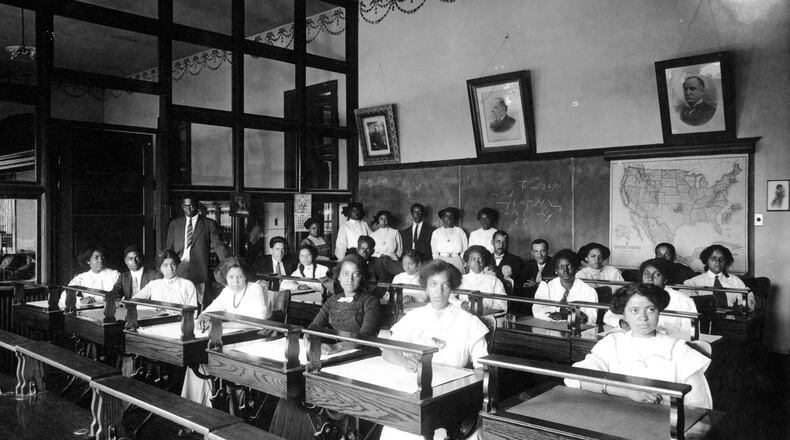University of Dayton
Credit: Unknown
Credit: Unknown
The University of Dayton originally opened as St. Mary’s School for Boys on July 1, 1850. The first president of the school, Father Leo Meyer, bought the 125-acre property for a medal of St. Joseph and $12,000 (more than $300,000 in today’s money).
Since 1850, the university has nearly doubled in size with 398 acres and its endowment has grown to more than $500 million.
Wright State University
Wright State began as a satellite branch for The Ohio State University and Miami University in 1961. This was in part of Dayton becoming a large metropolis with an emerging presence as a high-technology center that was in need of an increasingly educated work force.
The construction of the Dayton campus was completed in 1964. In 1967, the institution became independent and was named in honor of Orville and Wilbur Wright.
Wilberforce University
Credit: Rembert E. Stokes Archives and S
Credit: Rembert E. Stokes Archives and S
Wilberforce is known as one of the country’s oldest private, historically black universities, named after 18th century abolitionist William Wilberforce. It was founded in 1856 by the Methodist Episcopal Church, which purchased property at Tawawa Springs, near Xenia.
Due to the Civil War and dwindling enrollment, the original college closed its doors in 1862. The next year it was reopened by Bishop Daniel A. Payne, who gained the help of a local principal, John G. Mitchell, and the pastor of the A.M.E. Church of Zanesville, Jams A. Shorter. Thereafter, the property was turned over to the three men who were declared agents of the church.
Central State University
Central State was originally created in 1887 as the Combined Normal and Industrial Department at Wilberforce University with the objective of providing teachers training and vocational education. In 1947, it legally split from Wilberforce to become the College of Education and Industrial Arts.
It wasn’t until 1951 that the college changed its name to Central State College, and over a decade later received university status.
Miami University
Credit: Mixed
Credit: Mixed
This university was chartered in 1809 by the State of Ohio but did not hold classes until 1824. One of the country’s oldest public universities, Miami was a founding site for four nationally recognized fraternities, Beta Theta Phi, Phi Delta, Sigma Chi, and Phi Kappa Tau, and one sorority, Delta Zeta.
Cedarville University
This southwest institution was established in January 1887 by five men from the New Light Reformed Presbyterian Church. The founders of the college dreamed of a place that would “provide Christians students with an education that was offered within a spiritual framework,” according to the university’s website.
In the first half of the 20th century, Cedarville experienced low enrollment and a lack of funds. The college would have to merge with another college or be forced to close its doors.
In 1953, ownership of the college was transferred to the Baptist Bible Institute of Cleveland and the school changed its denomination from Presbyterian to Baptist. Cedarville changed its designation to university in September 2000.
About the Author





